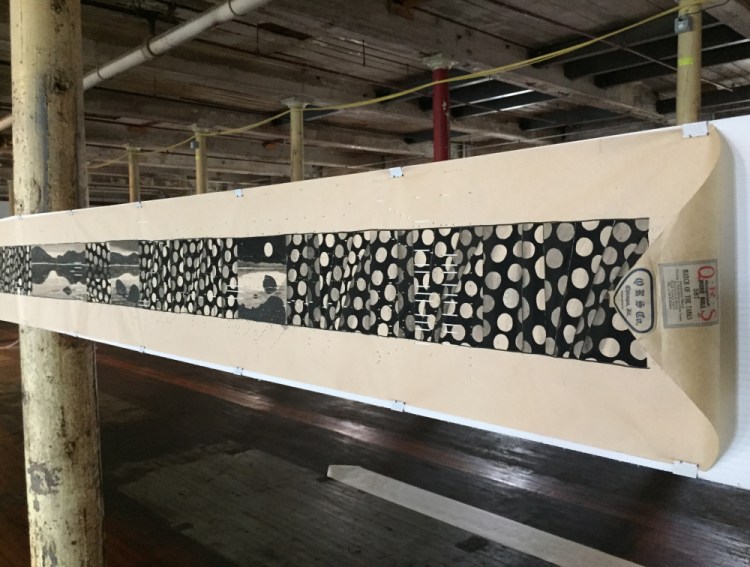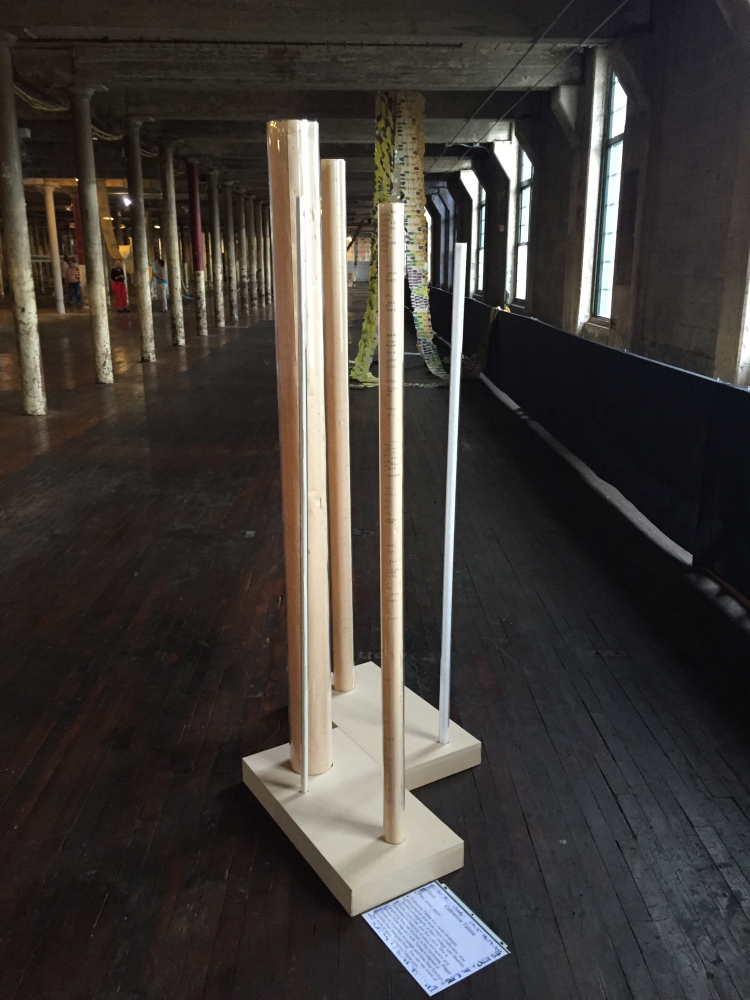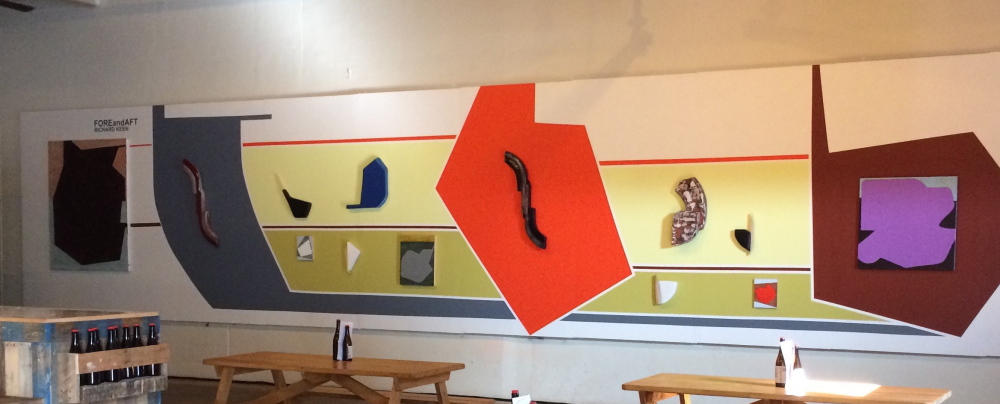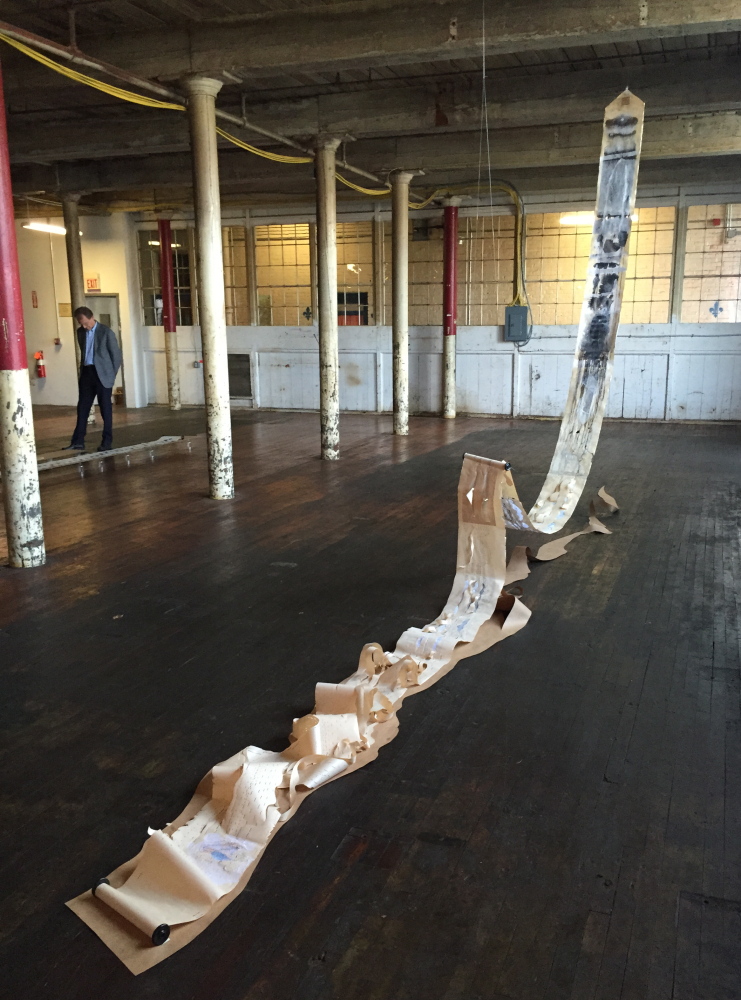I have heard many opinions recently about “top-down” culture in Maine, when folks who are in power dictate the most important cultural topics – in other words, cultural patriarchy. This might conjure specters of Stalin, Hitler or even American McCarthyism. But on a practical level, the conversation is about who controls the presentation of local culture. Are we hearing the voices of the artists, or the institutions and their benefactors?
This is an important topic, but it’s prone to partisan knee-jerk responses; our society responds to anything that looks partisan by immediately painting ourselves into our respective corners and shouting so loudly that we can’t hear (or converse with) anyone else.
While the conversations tend to turn on whether top-down is good or bad, what we need is a balance of top-down and bottom-up programming. Bottom-up shows can be curated by artists rather than hierarchical institutions. Examples include the suite of excellent shows mounted by the Union of Maine Visual Artists at their new gallery on Congress Street, and the Kennebec Valley Art Association’s Harlow Gallery in Hallowell.
Two creative, strong and current exhibitions that feature differing formats of the artist-as-curator are Richard Keen’s “Fore and Aft” at Oxbow Blending and Bottling (a speakeasy-ish brewing facility that doubles as the secret hideout of the Portland Mural Initiative) and “The Piano Roll Project: Shared Sensibilities” at the Bates Mill Complex in Lewiston.
Keen’s show at Oxbow is basically a gallery-sized show of 13 paintings and relief sculptures incorporated into an 8-by-40-foot mural on a single wall that acts like a very hip (and shiplike) version of a groovy 1972 kitchen. Somehow, however, Keen has produced something that eludes being grouped as an exhibition, an installation or a mural while at the same time satisfying all of the checklist points for each of these.
Keen’s wall painting falls in the space between being a simple armature (a frame) for his 13 pieces and being a legible mural on its own. The legibility issue wells from the indeterminate forms in the paintings: They are questionably abstract because they act like shapes we should be able to recognize but can’t.
While some of Keen’s strongest recent work has trod indeterminate ground by comparing forms such as an island to the keel of a ship, Keen is now following his own intuition to a point just out of recognizable reach. It feels like abstract photography but without the faith there is a real source in the world. And that leaves us with only the artist’s vision and questions not only about forms but intent. (What is he trying to convey?) Keen is also playing the role of curator by organizing his works into a rebus-like structure.
The entire installation exudes savvy intention, but we find ourselves considering that the curatorial conclusion is not illegible, but illegibility itself – a target that would not be viable for a curator if he weren’t also the artist.
“The Piano Roll Project” is a type of show for which the curators are almost necessarily artists. Thirty artists were given piano rolls to repurpose as art for a show hosted by Museum L-A. (Piano rolls are those long sheets of paper fed into player pianos which read the machine-cut holes to play songs, and, like karaoke, show the words so folks could sing along.)
The originators and curators of the project (their term is “organizers”) are artists Kristin Malin and Gail Skudera, who participated along with the other artists. (This is not only fine, but very cool from a common-ground standpoint, whereas at museums it is typically not cool for a curator to include her own works within the show she curates.) The general idea is that the artists are all on the same page and challenge each other in terms of creativity, technique and appeal. This is fun for the artists and it gives the public a level playing field on which to compare them.
On these terms, the “Piano Roll Project” is highly successful. It is entertaining, insightful, educational and fun. Dan Mills’ piece, for example, used the paper roll as a track for handmade carts that are part of Museum L-A’s collection: They were created by the mill’s textile workers to facilitate their labor. Mills’ directional orientation of the carts on the path blends an eerie nostalgia with the feel of a children’s toy circus train – a ghostly reminder of the child labor in the mill set against “normal” childhood activities like songs and parades.
Gayle Fraas’ and Duncan Slade’s “A Walk Between Two Moons” handsomely alternates black-and-white night moon landscapes with passages of black and white polka dots. It’s a savvy piece of painting that also presses the time element of the paper roll. Jung Hur’s three rolls, thickly printed with his signature keyhole forms, spiral around the mill’s structural posts in a subtle gesture that matches his spiraling Yin-Yang model of time. Heather Lyon replaced her roll with a cyanotype (blueprint) on cloth copy draped with the elegance of a long-trained wedding dress: It is simultaneously something old, something new, something borrowed and something blue.
Catherine Telese’s rolls are fit in tall, slender plexi tubes that tower like sculpturally compelling model skyscrapers. And among the many other worthy works, co-curator/artist Malin knits together several strands of cascading logic (melody, narrative, shape, flow, imagery, etc.) in her “Waterfall.”
“Shared Sensibilities” is a model exhibition both for artists and for those trying to wrap their heads around the role of institutional patriarchy in Maine’s visual culture. (When the power and the means of displaying lies largely in the hands of a few, it’s worth watching closely.) Mills, after all, is the director of the Bates College Museum of Art as well as a nationally recognized participating artist, and this exhibition benefits greatly from the support of Museum L-A. Rather than antagonism between artists and institutions, “Shared Sensibilities” illustrates the opposite: well-balanced symbiosis.
Especially today, in this age of social media and online opportunities, there is a place for virtually any approach to the exhibition of art and unlimited space for creativity in opening new exhibition possibilities. It’s easier than ever for artists to be effective and creative curators. We no longer need to rely on institutions to show us the way.
Freelance writer Daniel Kany is an art historian who lives in Cumberland. He can be contacted at:
dankany@gmail.com
Send questions/comments to the editors.






Success. Please wait for the page to reload. If the page does not reload within 5 seconds, please refresh the page.
Enter your email and password to access comments.
Hi, to comment on stories you must . This profile is in addition to your subscription and website login.
Already have a commenting profile? .
Invalid username/password.
Please check your email to confirm and complete your registration.
Only subscribers are eligible to post comments. Please subscribe or login first for digital access. Here’s why.
Use the form below to reset your password. When you've submitted your account email, we will send an email with a reset code.